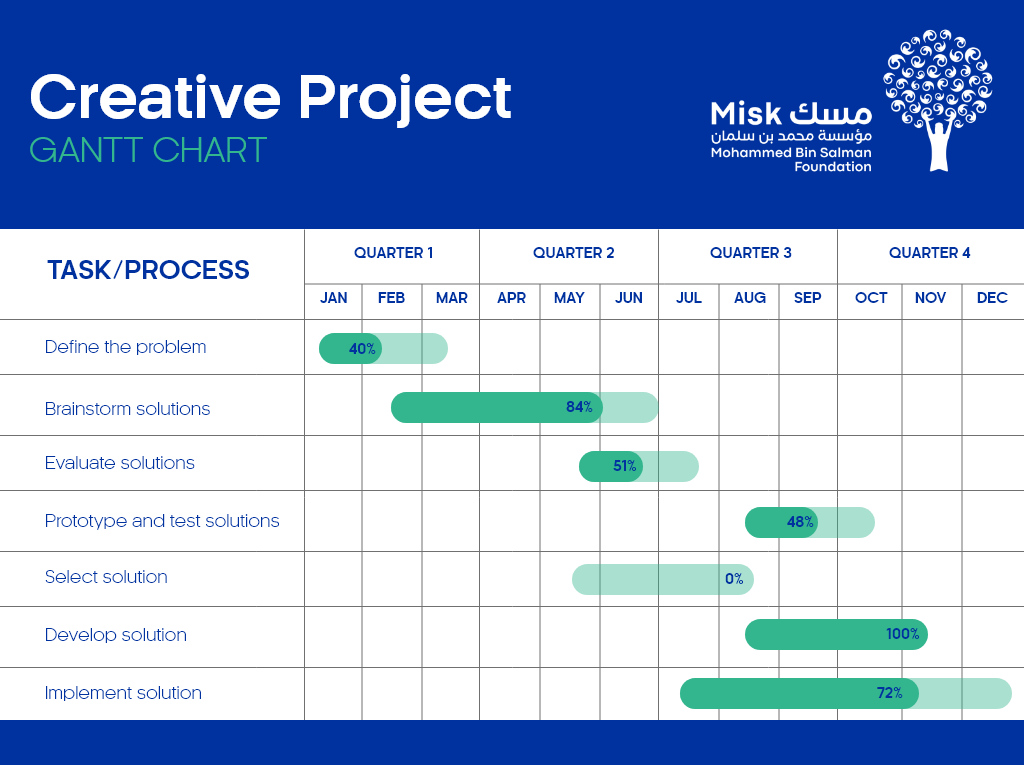How to Create Project Timelines for Project Management?
What is the Project Timeline?
Successful companies are characterized by meticulous scheduling to achieve monthly and yearly goals. Most companies also strive to adhere to set deadlines with their clients, while other companies celebrate their monthly progress as steady steps towards achieving major goals.Mastering planning, scheduling, and the ability to control daily tasks with timely delivery is success in itself, especially if you're an employee. The better you can manage your time at work and beyond, the more likely you are to progress and succeed in your professional and personal life.
This article sheds light on the definition of project timelines in project management, their benefits, and how to create an effective and accurate timeline.
What is a project timeline in project management?
A project timeline is a tool used to manage the project's time visually in the form of vertical or horizontal charts. It provides an overview of key tasks, activities, and deadlines to ensure the project is on the right track and is delivered on time.

Why should we create project timelines for project management?
Project timelines offer a fantastic array of benefits essential for individual work or collaboration within a company, including:
- Ensure a comprehensive project flow by outlining the time of each task in detail to minimize the risk of overlooking any task or issue that could potentially impact the project's outcome.
- Facilitate internal project monitoring, allowing project managers or stakeholders to monitor employee performance and ensure project delivery on time.
- Determine the duration of each stage or task and logical dependencies or sequences between them using Gantt chart model.
- Enhance communication and transparency among team members. Creating a clear timeline at the beginning of each project helps each team member gain a clear vision of the work scope.
To sum up, adhering to a clear and detailed timeline is a fundamental element in project management. Therefore, it's hard to envision a company operating without clear timelines or a project without a clear schedule!
How can you create a project timeline for project management?
To create a timeline that allows you to adjust and manage project performance, follow these simple steps to understand and grasp the working mechanism of project timelines:
- Start by identifying the project's key milestones. Then, divide the project into stages while estimating the duration of each stage. For example, if your project involves designing a visual identity for a client, divide the timeline into five stages: Brainstorming Sessions, Logo Design, Client Approval of Logo, Building the Integrated Identity, and Review and Delivery.
- Break down the above stages into main and sub-tasks.Allocate the duration, designate responsible parties, and determine start and end dates. This approach enables you to provide your manager or client with the anticipated delivery timeline.
- No project goes exactly as planned. So, don't forget to add time buffers for unexpected delays, considering the time needed for review and approval. This helps in ensuring the timely completion of your project.
- Design your timeline to be attractive and visually appealing. You can use timeline charts such as Gantt charts to visualize tasks. Seeing tasks on the timeline helps identify scheduling problems early on, allowing you to update deadlines and inform the rest of the team.
- Regularly track work progress using the timeline. Make periodic adjustments to ensure the project stays on the right track. Update task durations, start/end dates, and the percentage indicating the completion rate.

